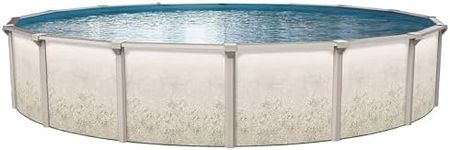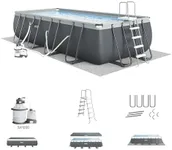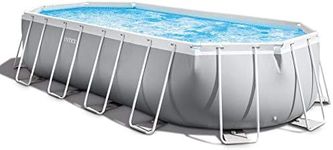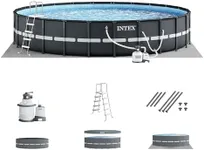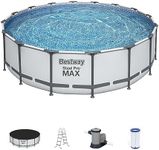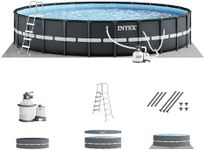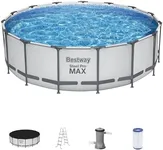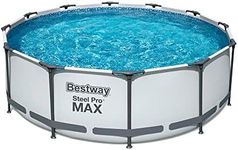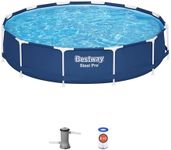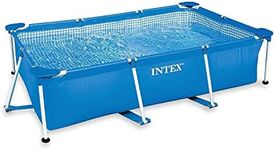Buying Guide for the Best Above Ground Pools
Choosing an above-ground pool can be a fun way to bring relaxation and entertainment to your backyard. The right pool for you depends on your available space, how many people will use it, and how you plan to use it—whether for family fun, exercise, or just cooling off. Understanding the key features will help you make a choice that fits your needs and ensures you get the most enjoyment out of your pool.Size and ShapeThe size and shape of an above-ground pool determine how much space it will take up in your yard and how many people can use it comfortably. Pools come in various shapes like round, oval, and rectangular, and in sizes ranging from small splash pools to large family-sized options. If you have a small yard or just want a pool for a few people, a smaller round pool might be best. For larger families or those who want to swim laps, a bigger or rectangular pool could be more suitable. Always measure your available space and consider how many people will use the pool at once to guide your choice.
Pool DepthPool depth affects both safety and usability. Shallow pools (under 3 feet) are great for young children and casual wading, while deeper pools (over 4 feet) are better for swimming and adult use. Some pools offer a uniform depth, while others have a sloped bottom. Think about who will use the pool most—if it’s mainly for kids, a shallower pool is safer; for adults or teens who want to swim, a deeper pool is more enjoyable.
Frame MaterialThe frame material impacts the pool’s durability and how long it will last. Common materials include steel, resin, and hybrid combinations. Steel frames are strong but can rust if not properly cared for, while resin frames resist rust and corrosion but may be less sturdy. Hybrid frames combine both for a balance of strength and weather resistance. If you live in a humid or rainy area, a rust-resistant frame is a good idea. For long-term use, look for sturdy materials that can withstand your local climate.
Liner QualityThe liner is the waterproof layer that holds the water inside the pool. Thicker liners are more durable and less likely to puncture or tear, while thinner liners may need to be replaced more often. Liners come in different patterns and colors, but the most important factor is thickness, usually measured in mils or gauge. If you expect heavy use or have pets, a thicker liner is a smart choice. For occasional use, a standard liner may be sufficient.
Filtration SystemA good filtration system keeps your pool water clean and safe to swim in. There are different types, such as cartridge, sand, and diatomaceous earth (DE) filters. Cartridge filters are easy to maintain and good for smaller pools, sand filters are effective for larger pools and require less frequent cleaning, and DE filters provide the finest filtration but need more maintenance. Choose a system that matches your pool size and your willingness to do regular upkeep.
Ease of InstallationSome above-ground pools are designed for quick, tool-free setup, while others require more time and effort to assemble. Inflatable pools are the easiest to set up but may not be as durable, while framed pools take longer to install but offer more stability. If you want a pool you can set up and take down each season, look for easy-install options. For a more permanent setup, be prepared for a more involved installation process.
Maintenance RequirementsMaintenance includes cleaning, checking water chemistry, and caring for the pool structure. Some pools come with maintenance kits or features that make upkeep easier, like built-in skimmers or easy-drain valves. Consider how much time you want to spend on maintenance—if you prefer low effort, look for pools with user-friendly features and clear instructions.
